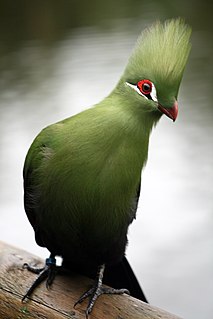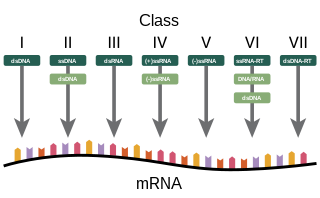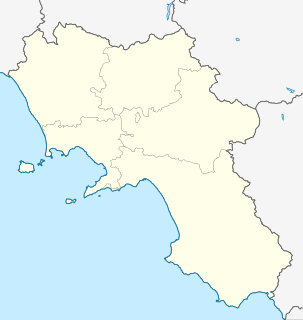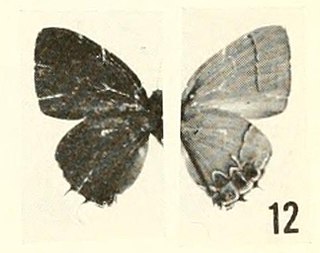
Eagle is the common name for many large birds of prey of the family Accipitridae. Eagles belong to several groups of genera, some of which are closely related. Most of the 60 species of eagle are from Eurasia and Africa. Outside this area, just 14 species can be found—2 in North America, 9 in Central and South America, and 3 in Australia.

The Neotropical realm is one of the eight biogeographic realms constituting Earth's land surface. Physically, it includes the tropical terrestrial ecoregions of the Americas and the entire South American temperate zone.
Virus classification is the process of naming viruses and placing them into a taxonomic system similar to the classification systems used for cellular organisms.

The cuckoos are a family of birds, Cuculidae, the sole taxon in the order Cuculiformes. The cuckoo family includes the common or European cuckoo, roadrunners, koels, malkohas, couas, coucals and anis. The coucals and anis are sometimes separated as distinct families, the Centropodidae and Crotophagidae respectively. The cuckoo order Cuculiformes is one of three that make up the Otidimorphae, the other two being the turacos and the bustards.

The turacos make up the bird family Musophagidae ( "banana-eaters"), which includes plantain-eaters and go-away-birds. In southern Africa both turacos and go-away-birds are commonly known as loeries. They are semi-zygodactylous: the fourth (outer) toe can be switched back and forth. The second and third toes, which always point forward, are conjoined in some species. Musophagids often have prominent crests and long tails; the turacos are noted for peculiar and unique pigments giving them their bright green and red feathers.

Sedum is a large genus of flowering plants in the family Crassulaceae, members of which are commonly known as stonecrops. The genus has been described as containing up to 600 species, subsequently reduced to 400–500. They are leaf succulents found primarily in the Northern Hemisphere, but extending into the southern hemisphere in Africa and South America. The plants vary from annual and creeping herbs to shrubs. The plants have water-storing leaves. The flowers usually have five petals, seldom four or six. There are typically twice as many stamens as petals. Various species formerly classified as Sedum are now in the segregate genera Hylotelephium and Rhodiola.

Podoviridae is a family of viruses in the order Caudovirales. Bacteria serve as natural hosts. There are currently 132 species in this family, divided among 3 subfamilies and 45 genera. This family is characterized by having very short, noncontractile tails.

Baltimore classification is a system used to classify viruses based on their manner of messenger RNA (mRNA) synthesis. By organizing viruses based on their manner of mRNA production, it is possible to study viruses that behave similarly as a distinct group. Seven Baltimore groups are described that take into consideration whether the viral genome is made of deoxyribonucleic acid (DNA) or ribonucleic acid (RNA), whether the genome is single- or double-stranded, and whether the sense of a single-stranded RNA genome is positive or negative.

The red-banded hairstreak is a butterfly native to the southeastern United States. It feeds on fallen leaves of sumac species and other trees. Its size ranges from 0.9–1.25 inches (23–32 mm). It lives near coastal areas.

Boletus is a genus of mushroom-producing fungi, comprising over 100 species. The genus Boletus was originally broadly defined and described by Carl Linnaeus in 1753, essentially containing all fungi with hymenial pores instead of gills. Since then, other genera have been defined gradually, such as Tylopilus by Petter Adolf Karsten in 1881, and old names such as Leccinum have been resurrected or redefined. Some mushrooms listed in older books as members of the genus have now been placed in separate genera. These include such as Boletus scaber, now Leccinum scabrum, Tylopilus felleus, Chalciporus piperatus and Suillus luteus. Most boletes have been found to be ectomycorrhizal fungi, which mean that they form a mutualistic relationship with the roots system of certain kinds of plants. More recently, Boletus has been found to be massively polyphyletic, with only a small percentage of the over 300 species that have been assigned to Boletus actually belonging there and necessitating the description and resurrection of many more genera.

The Lecithoceridae, or long-horned moths, are a family of small moths described by Simon Le Marchand in 1947. Although lecithocerids are found throughout the world, the great majority are found in the Indomalayan realm and the southern part of the Palaearctic realm.

Trebula or Trebula Balliensis or Trebula Baliensis, was an ancient city of Campania, Italy, the location of which is occupied by the modern village of Treglia in the comune of Pontelatone. The Monti Trebulani, a small mountain group in the modern province of Caserta, take their name from it.

Trebula was an ancient city of the Sabines in what is now central Italy, one of two bearing the name Trebula – Pliny being the only author who mentions both places: Trebulani qui cognominantur Mutuscaei, et qui Suffenates. Its site is clearly fixed at Monteleone Sabino, a village about 3 km on the right of the Via Salaria, between Osteria Nuova and Poggio San Lorenzo. There are considerable ruins here including those of a theatre, of thermae or baths, and portions of the ancient pavement. Several inscriptions have also been found here, some of which bear the name of its people, Plebs Trebulana, Trebulani Mutuscani, and Trebulani Mut., so that no doubt can remain of their attribution.

Lamiinae, commonly called flat-faced longhorns, are a subfamily of the longhorn beetle family (Cerambycidae). The subfamily includes over 750 genera, rivaled in diversity within the family only by the subfamily Cerambycinae.
Fieldia may refer to a number of different genera in various scientific fields:
Alphatristromavirus is the sole genus of viruses in the family Tristromaviridae. The thermophilic archaea of the genera Thermoproteus and Pyrobaculum serve as natural hosts. There are currently only two species in this genus: Thermoproteus tenax virus 1 and the type species Pyrobaculum filamentous virus 1 The genus was formerly classified into family Lipothrixviridae of order Ligamenvirales. However, due to lack of sequence similarity of TTV1 and PFV1 to other members of the Lipothrixviridae, genus Alphalipothrixvirus was renamed to Alphatristromavirus and moved into a separate family, the Tristromaviridae.

Calycopis pisis, the pisis groundstreak, is a butterfly found in several countries in Latin America.
Riboviria is a realm of viruses that includes all viruses that use a homologous RNA-dependent polymerase for replication. It includes RNA viruses that encode an RNA-dependent RNA polymerase; and, it includes reverse-transcribing viruses that encode an RNA-dependent DNA polymerase. RNA-dependent RNA polymerase (RdRp), also called RNA replicase, produces RNA from RNA. RNA-dependent DNA polymerase (RdDp), also called reverse transcriptase (RT), produces DNA from RNA. These enzymes are essential for replicating the viral genome and transcribing viral genes into messenger RNA (mRNA) for translation of viral proteins.

Varidnaviria is a realm of viruses that includes all DNA viruses that encode major capsid proteins that contain a vertical jelly roll fold. The major capsid proteins (MCP) form into pseudohexameric subunits of the viral capsid, which stores the viral deoxyribonucleic acid (DNA), and are perpendicular, or vertical, to the surface of the capsid. Apart from this, viruses in the realm also share many other characteristics, such as minor capsid proteins (mCP) with the vertical jelly roll fold, an ATPase that packages viral DNA into the capsid, and a DNA polymerase that replicates the viral genome.

Cerdocyonina is an extant subtribe of the canines and is exclusively endemic to the Americas. Often described to be "fox-like" in appearance and behavior, they are more closely related to the wolf-like canids such as Canis than they are to the fox genus Vulpes. Its members are colloquially known as the South American canids. They are sometimes referred to as South American foxes in the older literature, but the term zorro has been recommended by mammalogists to avoid confusion with the true foxes of the tribe Vulpini

















